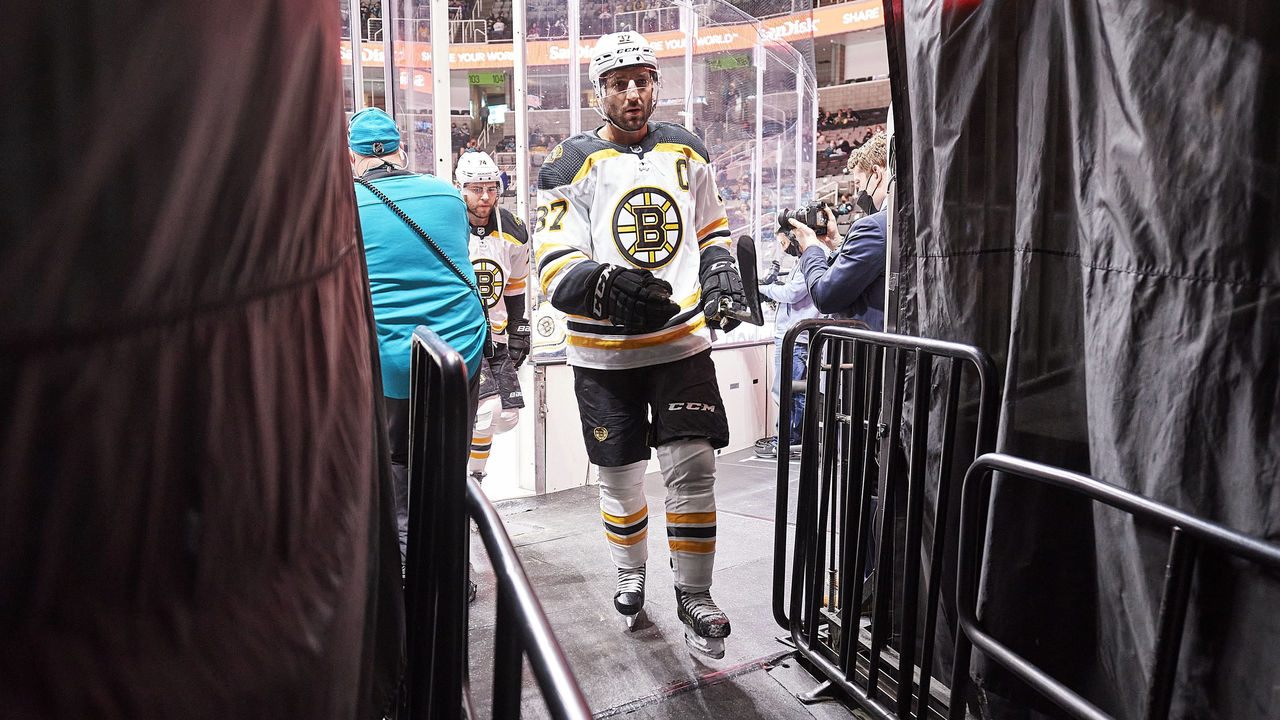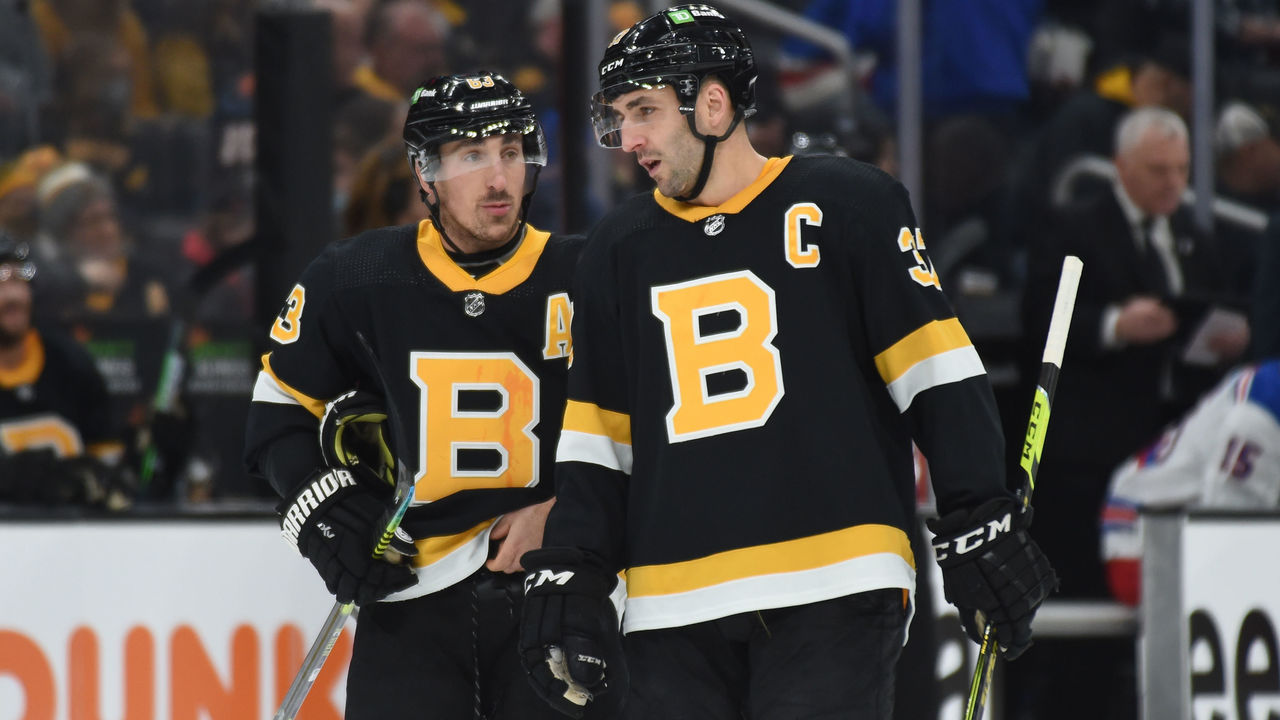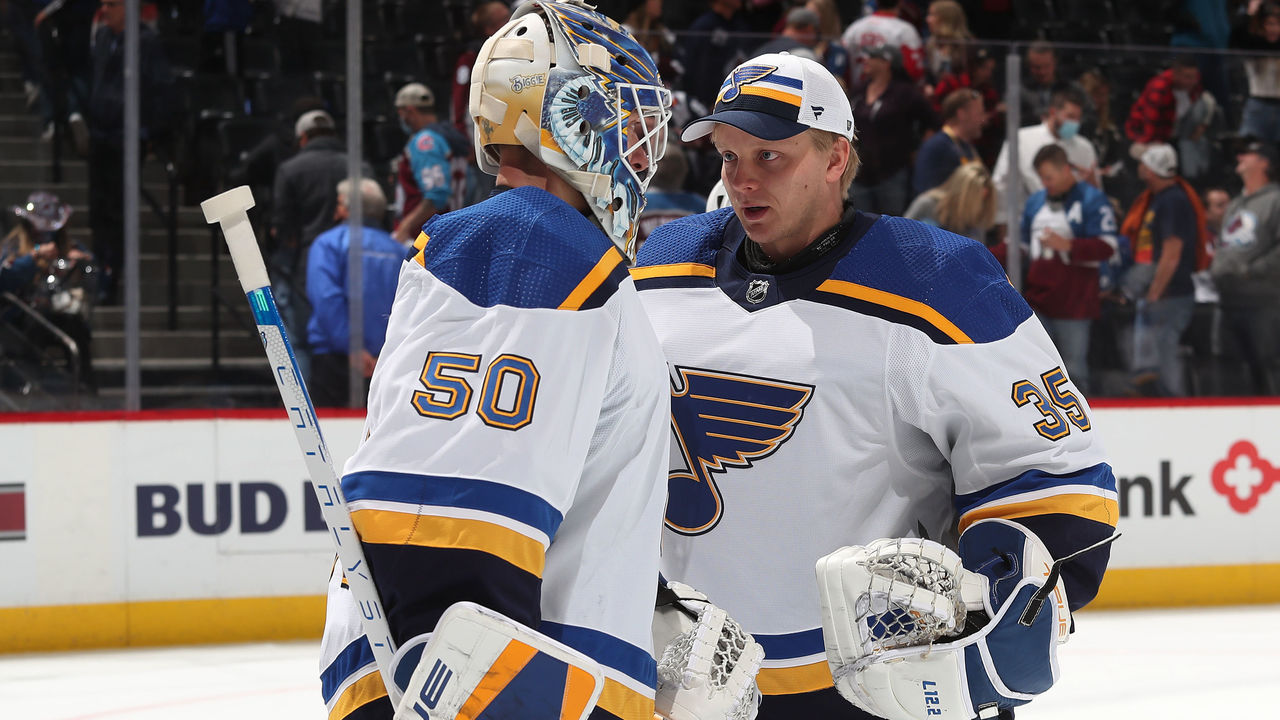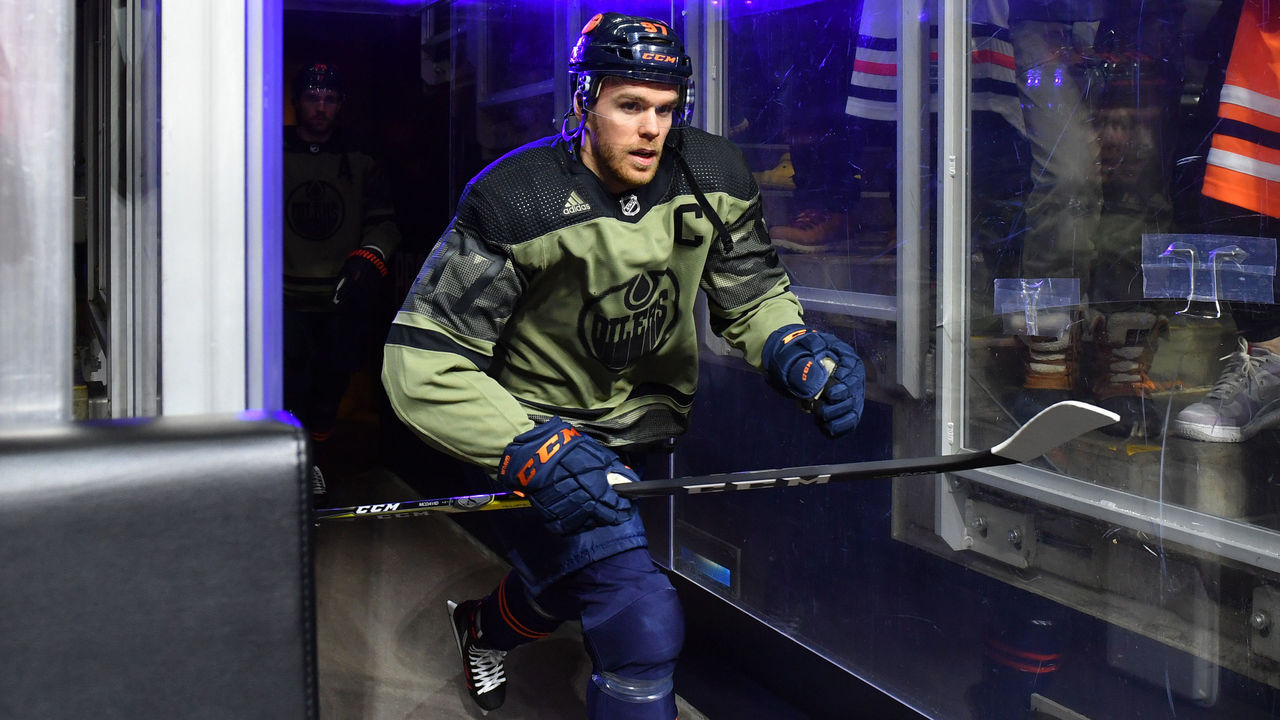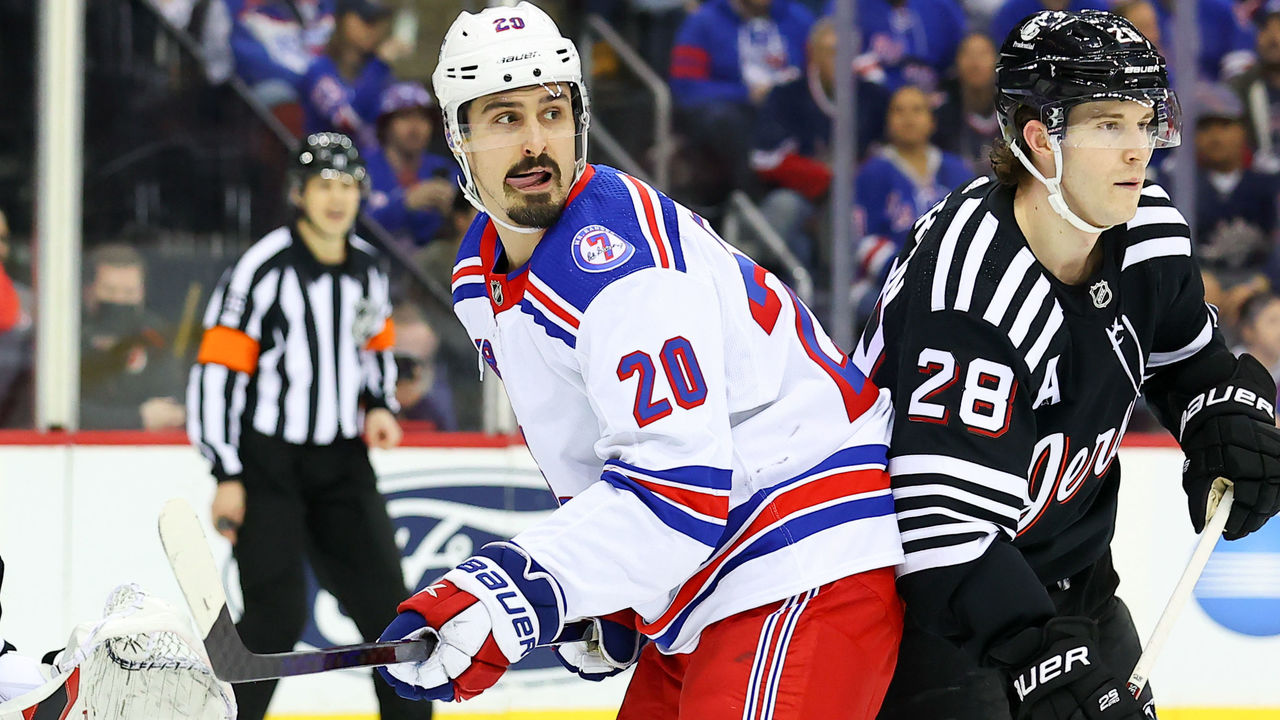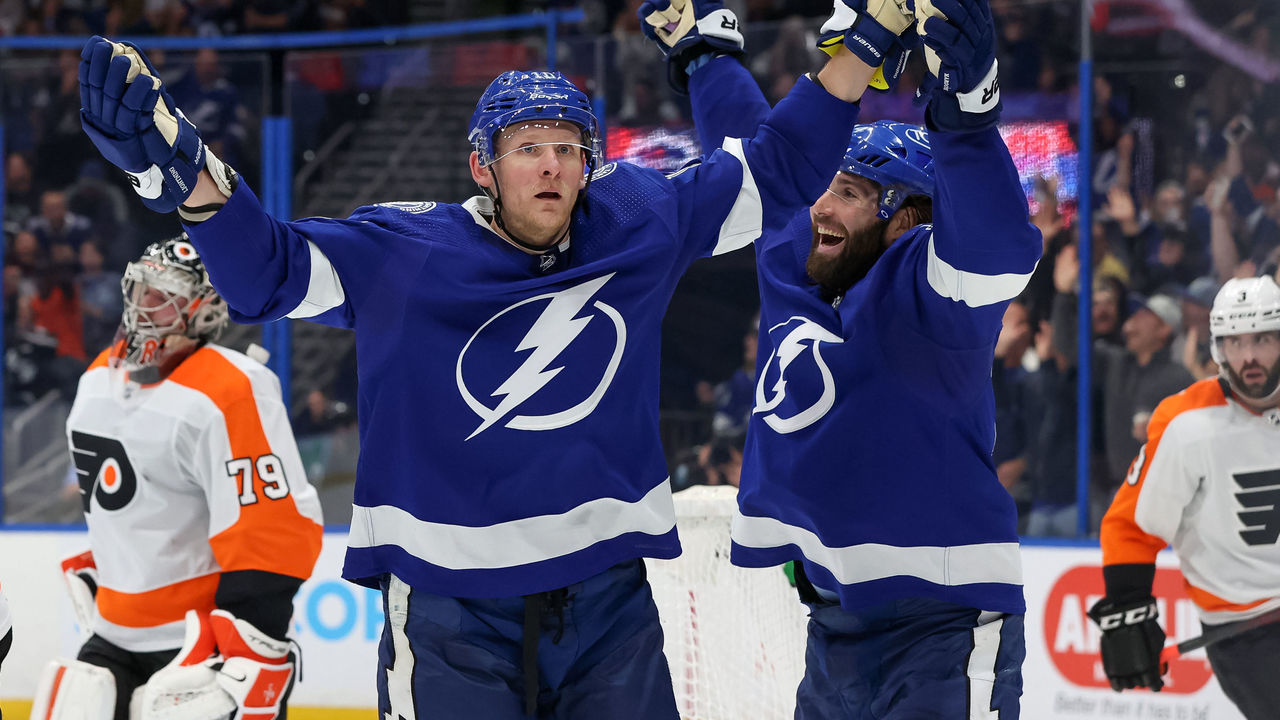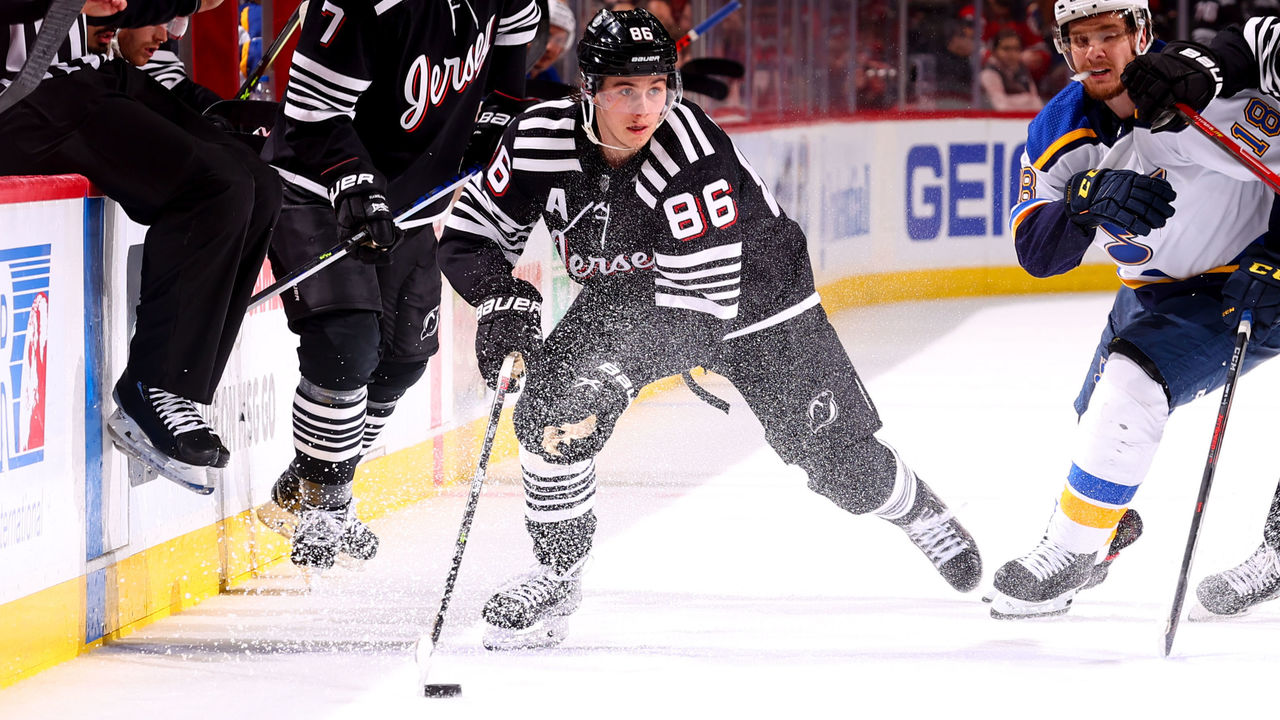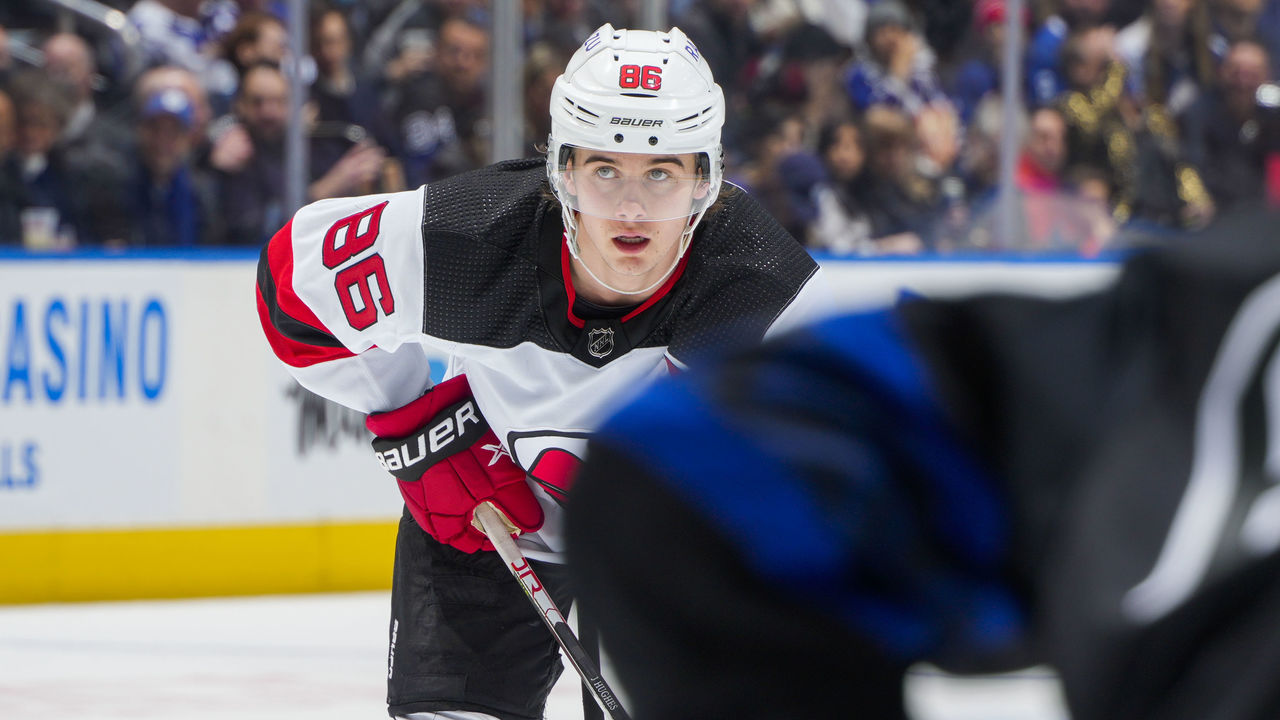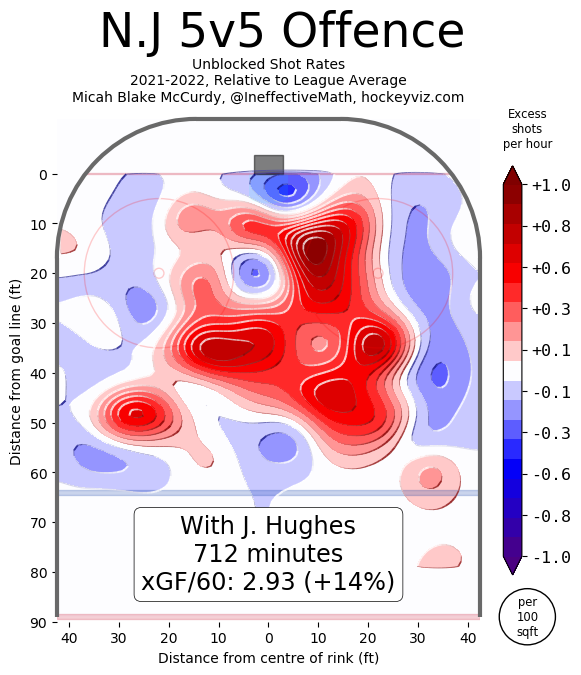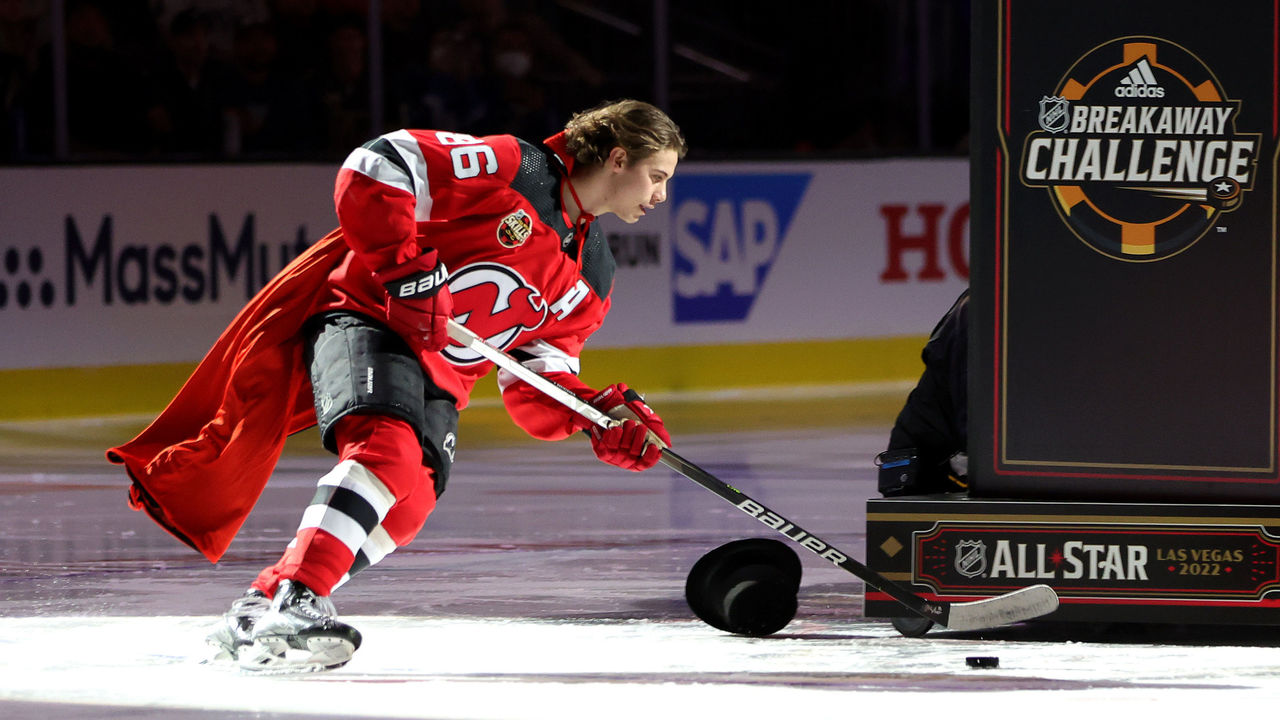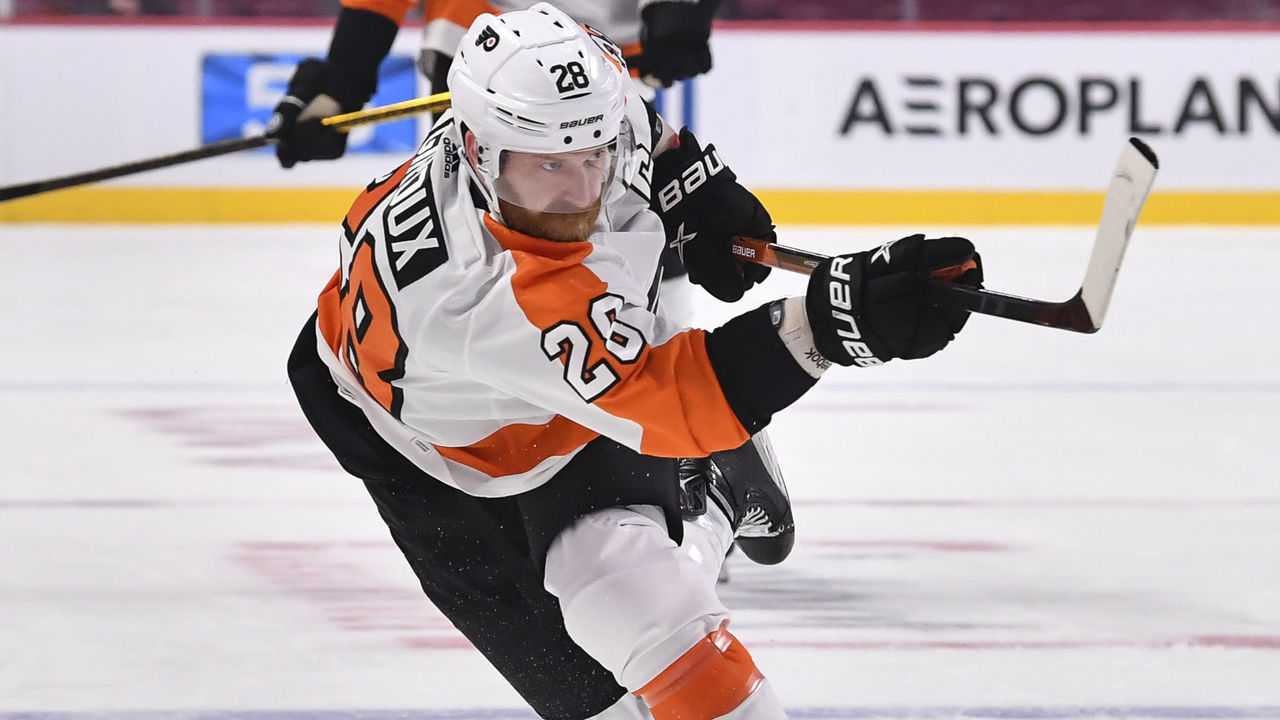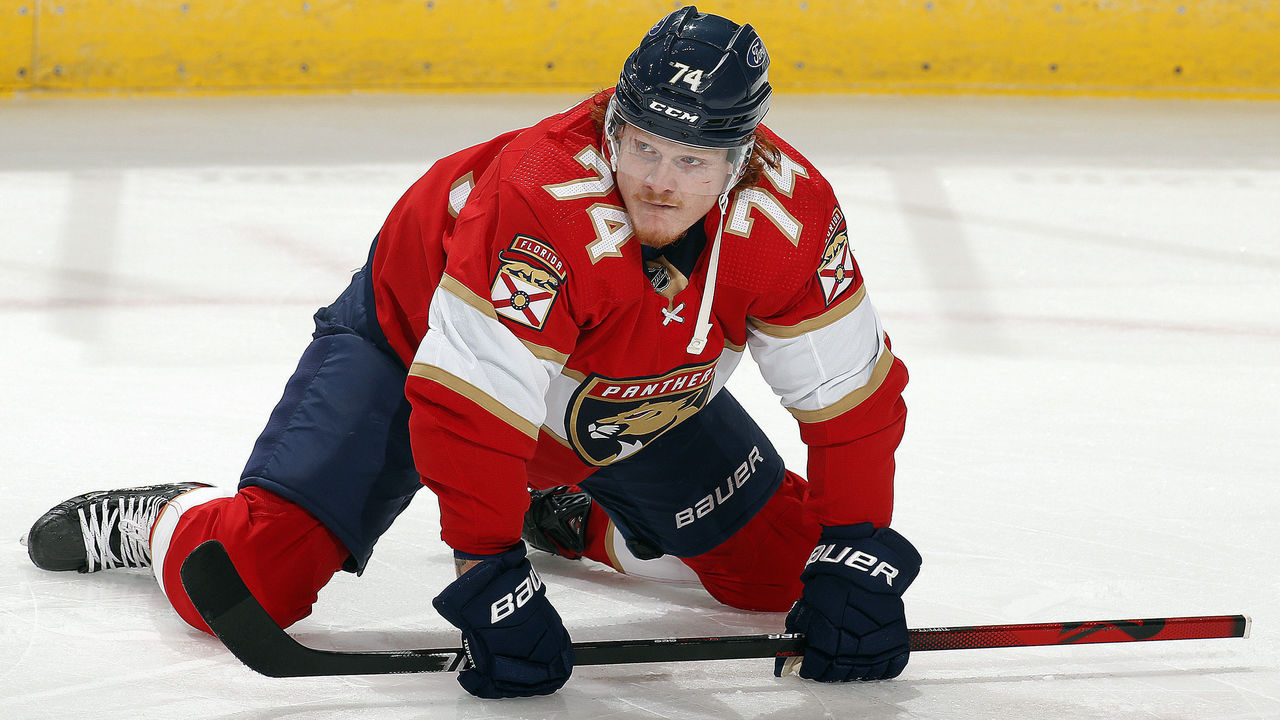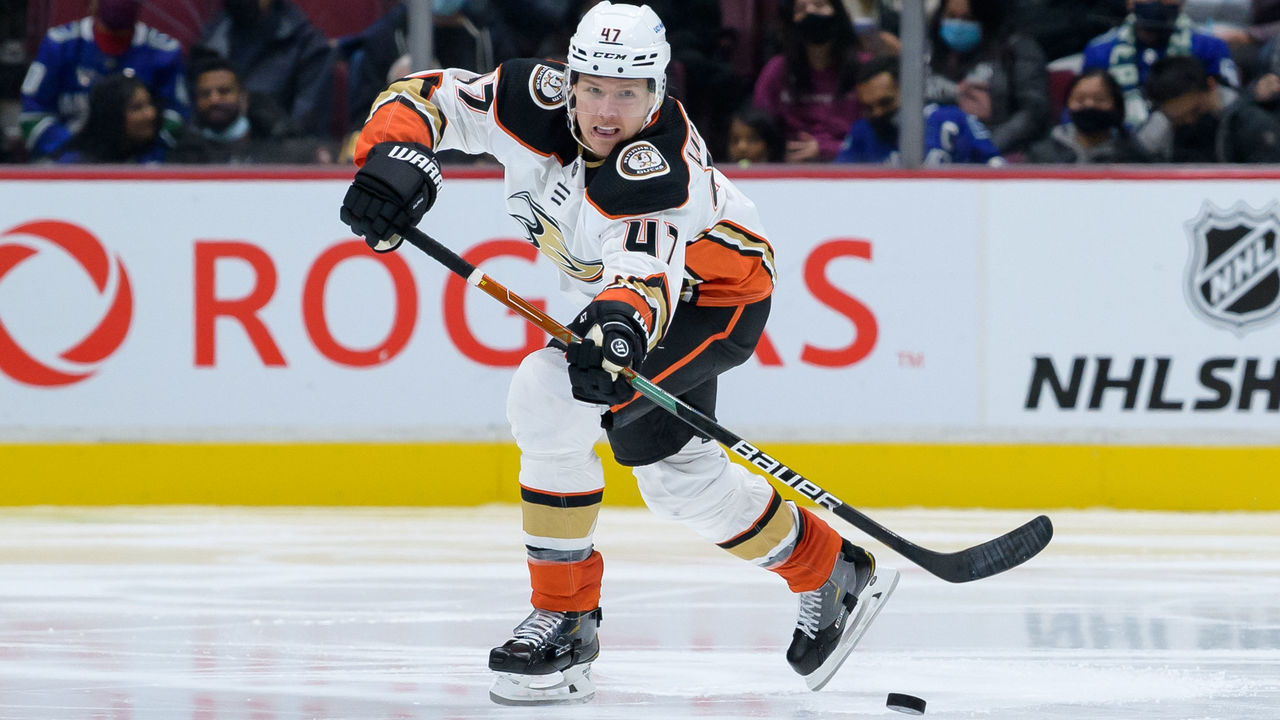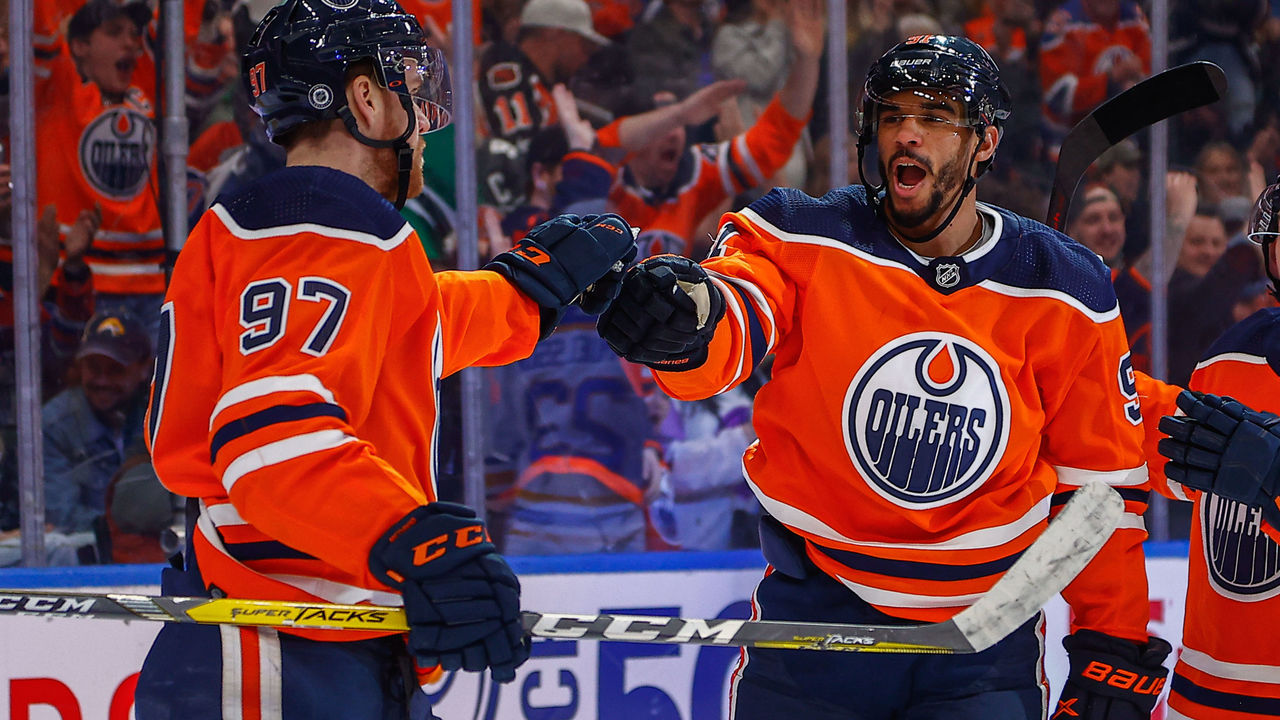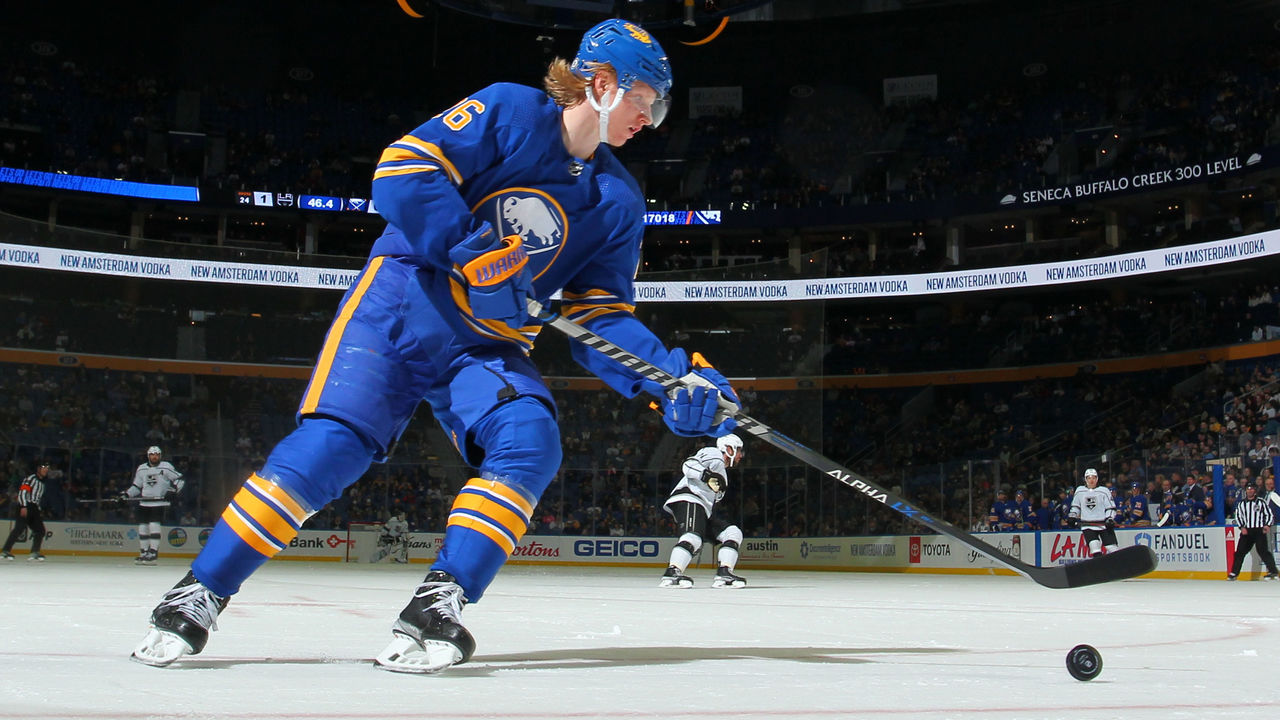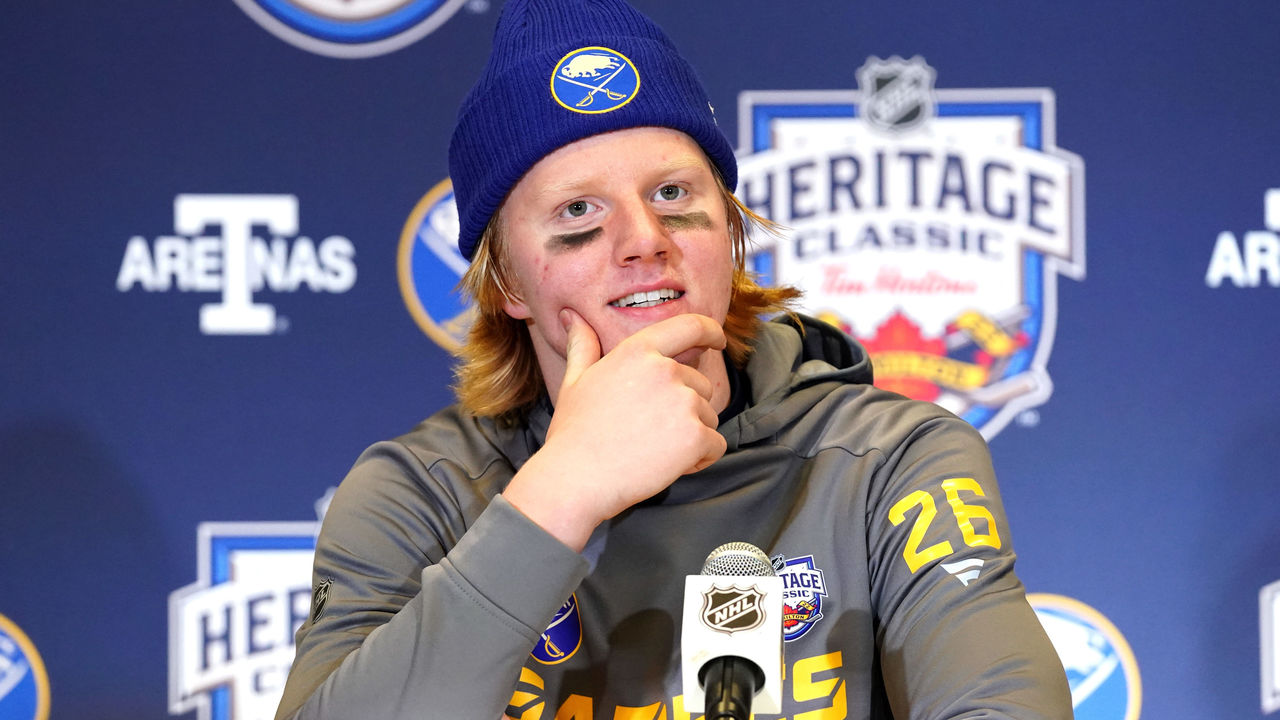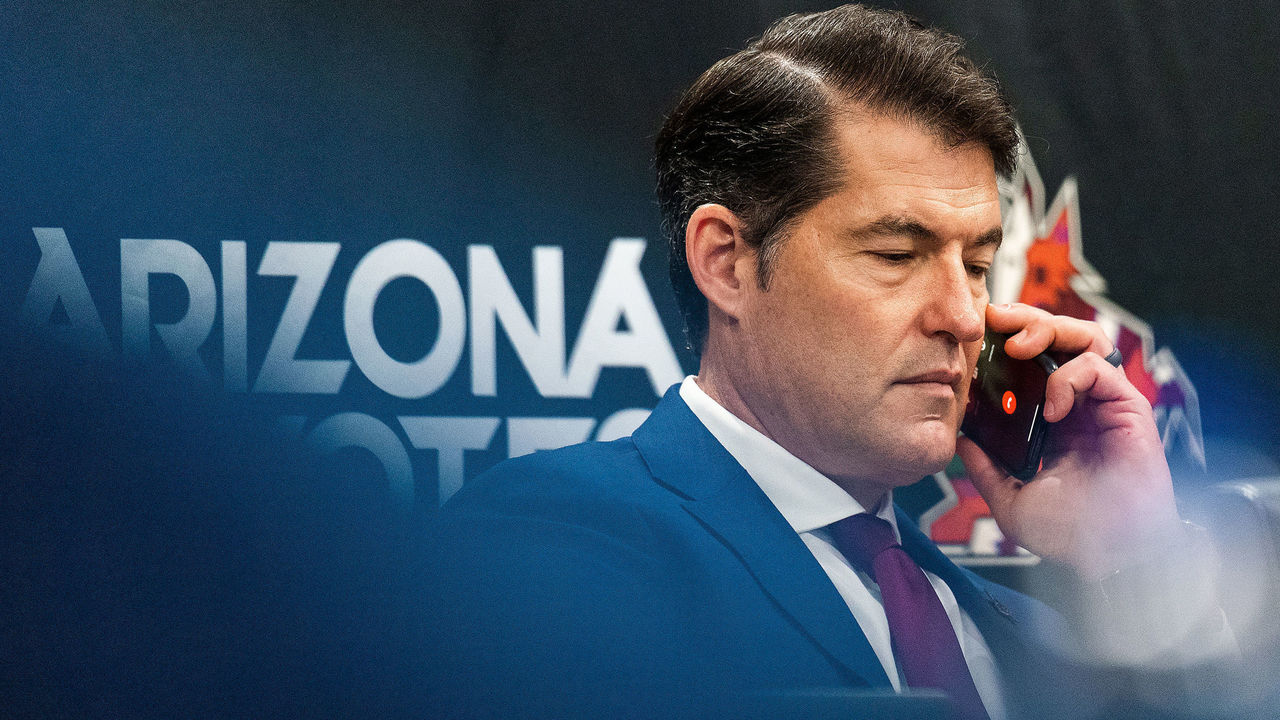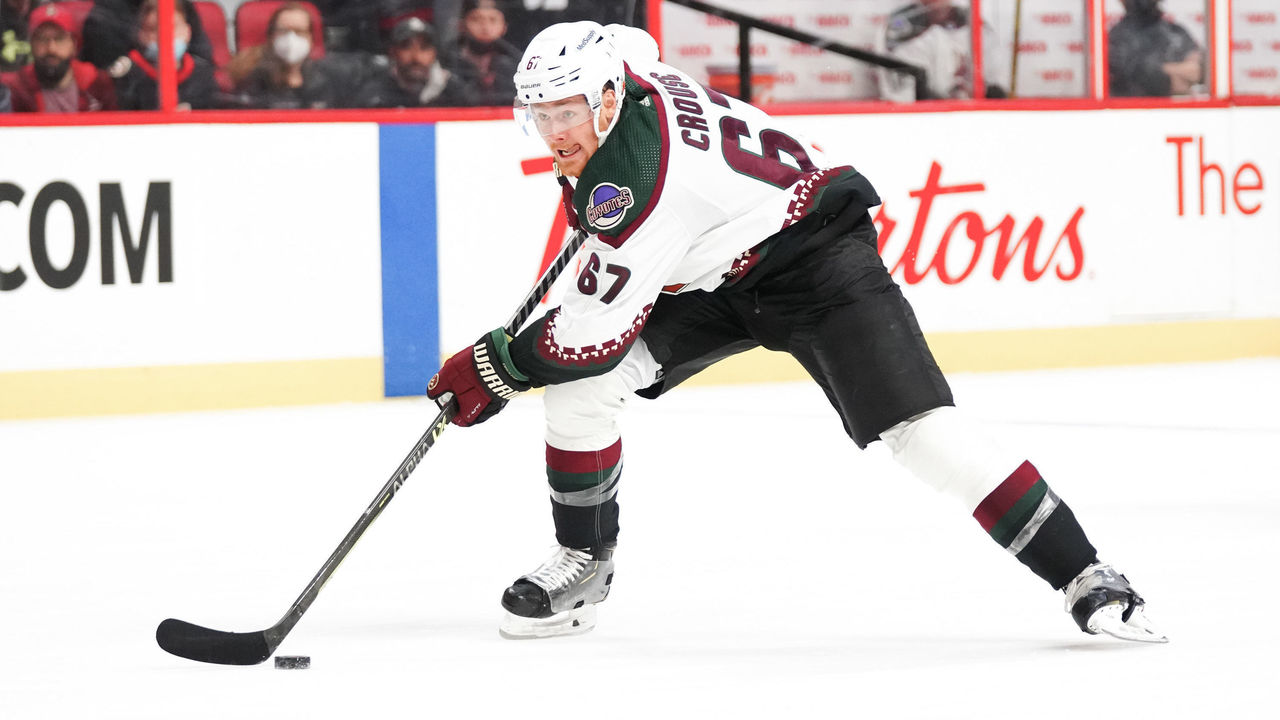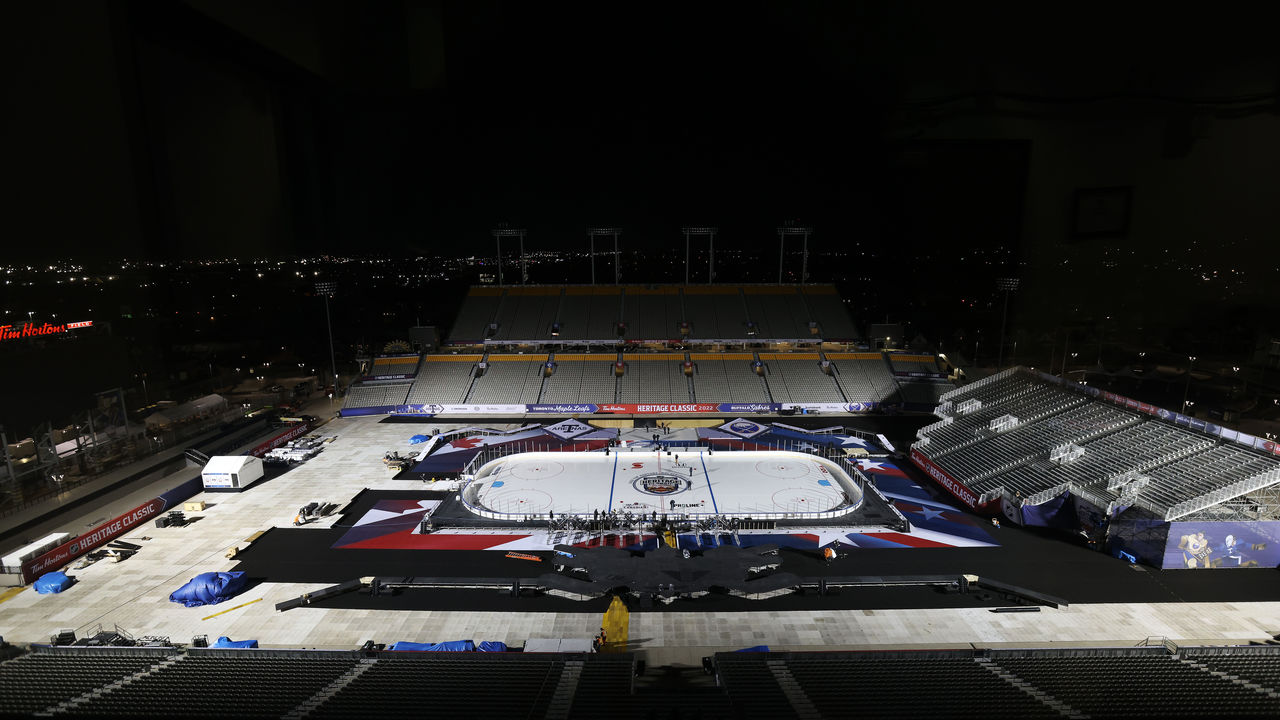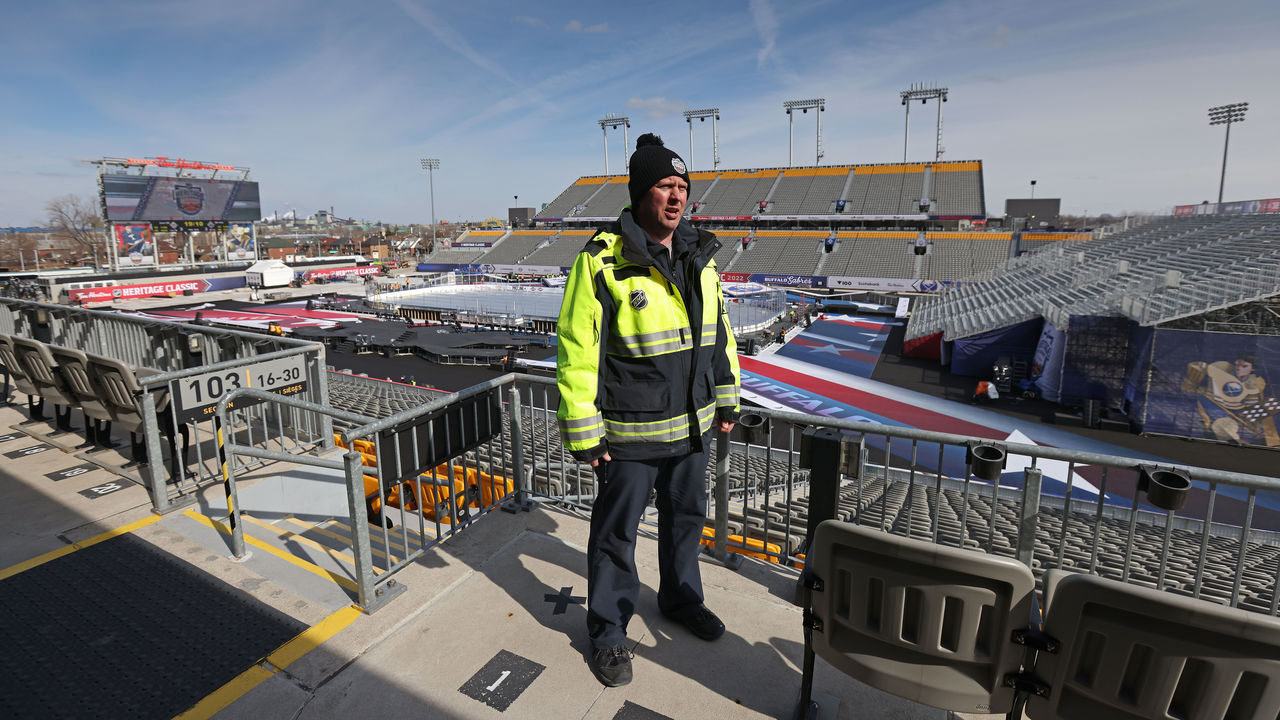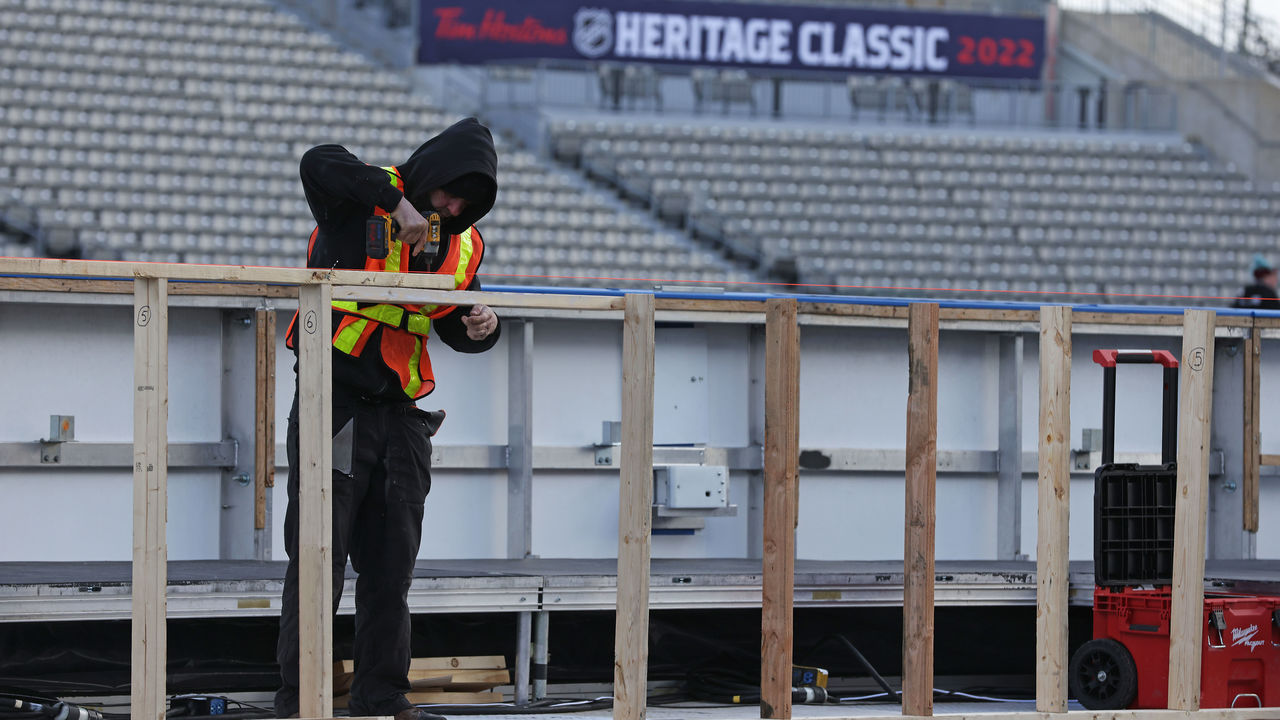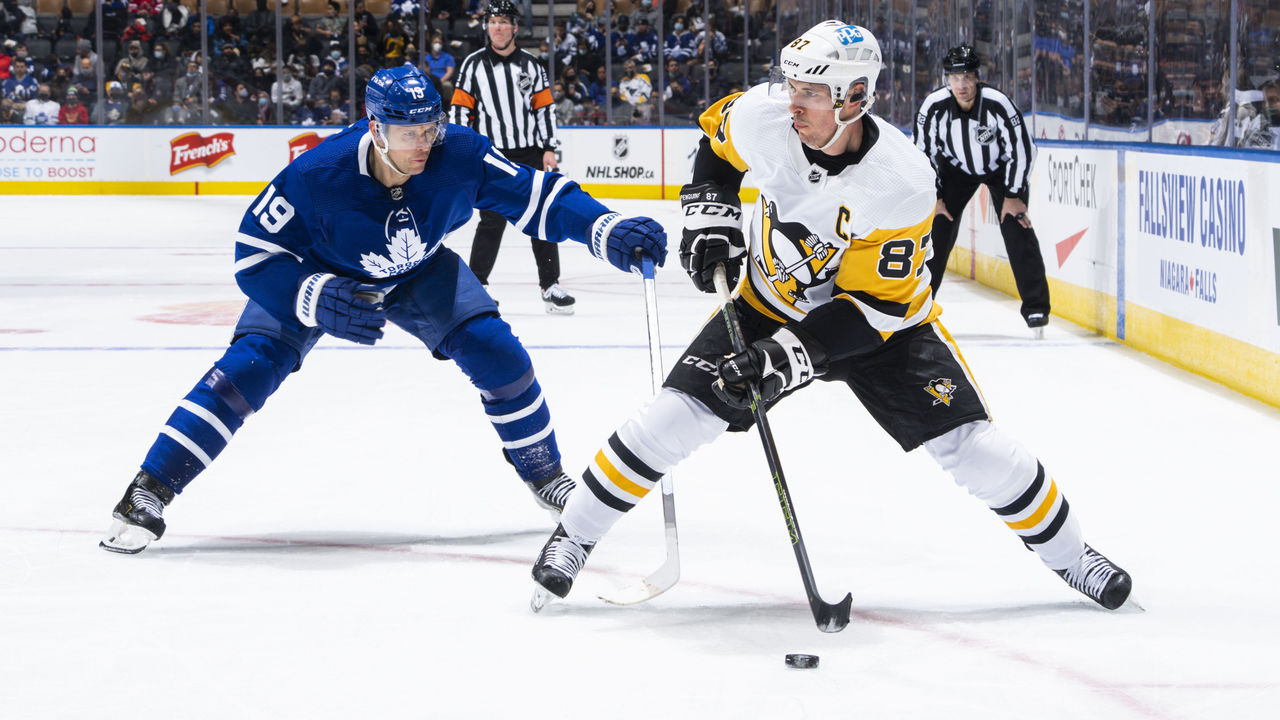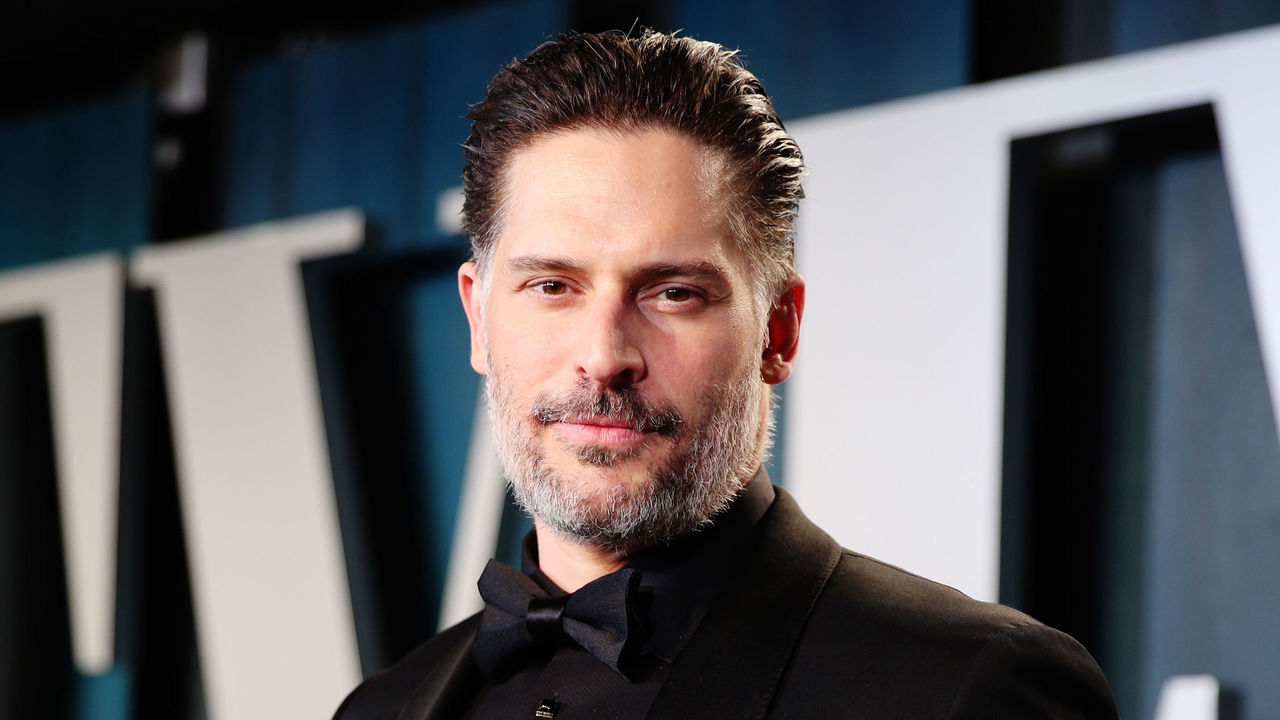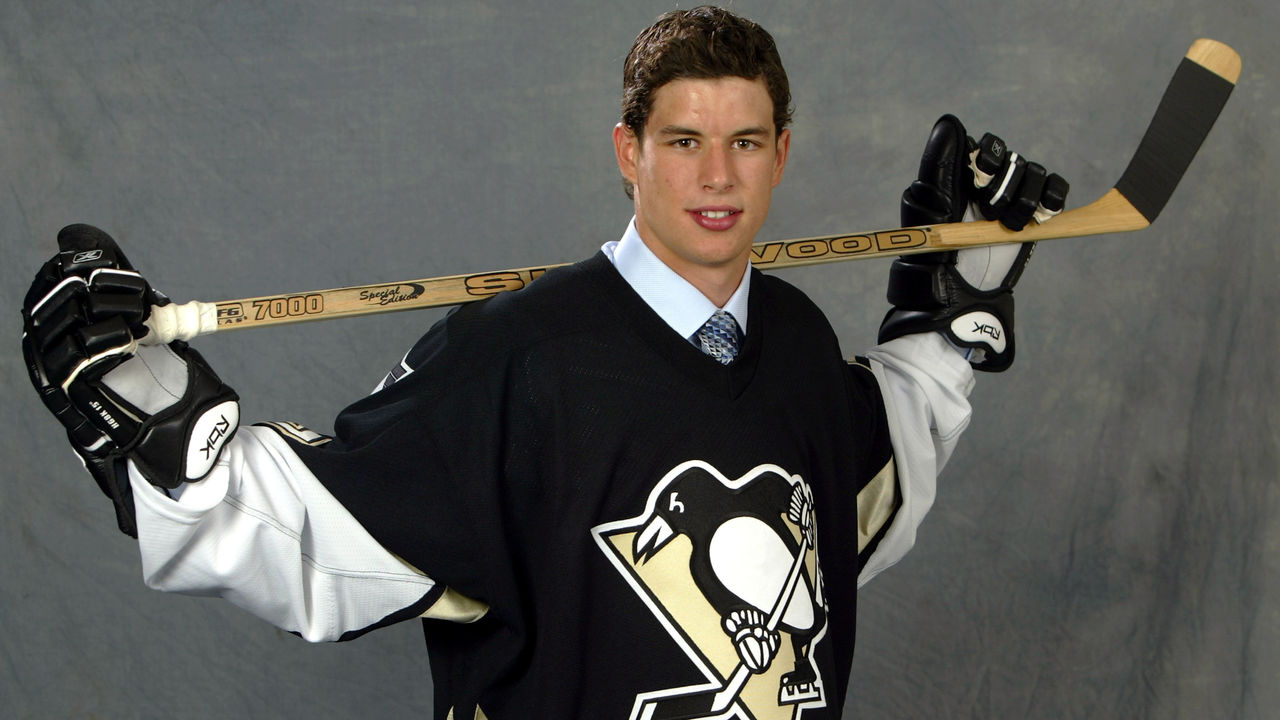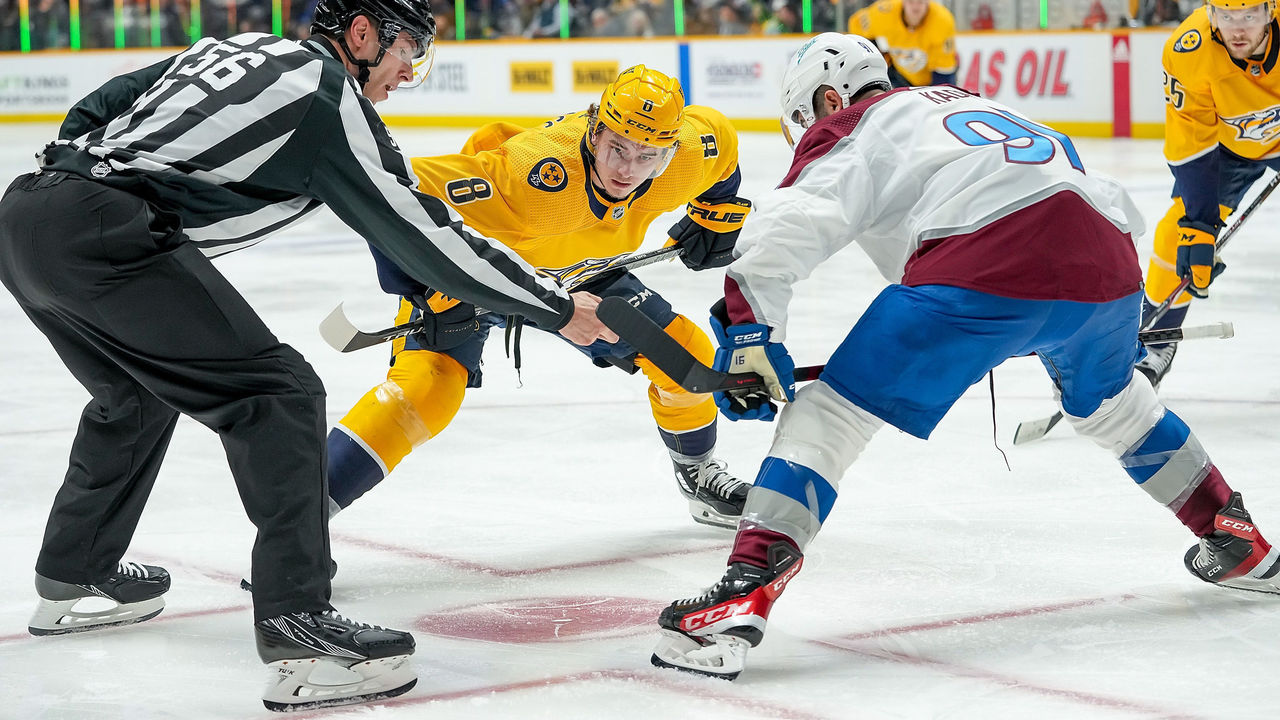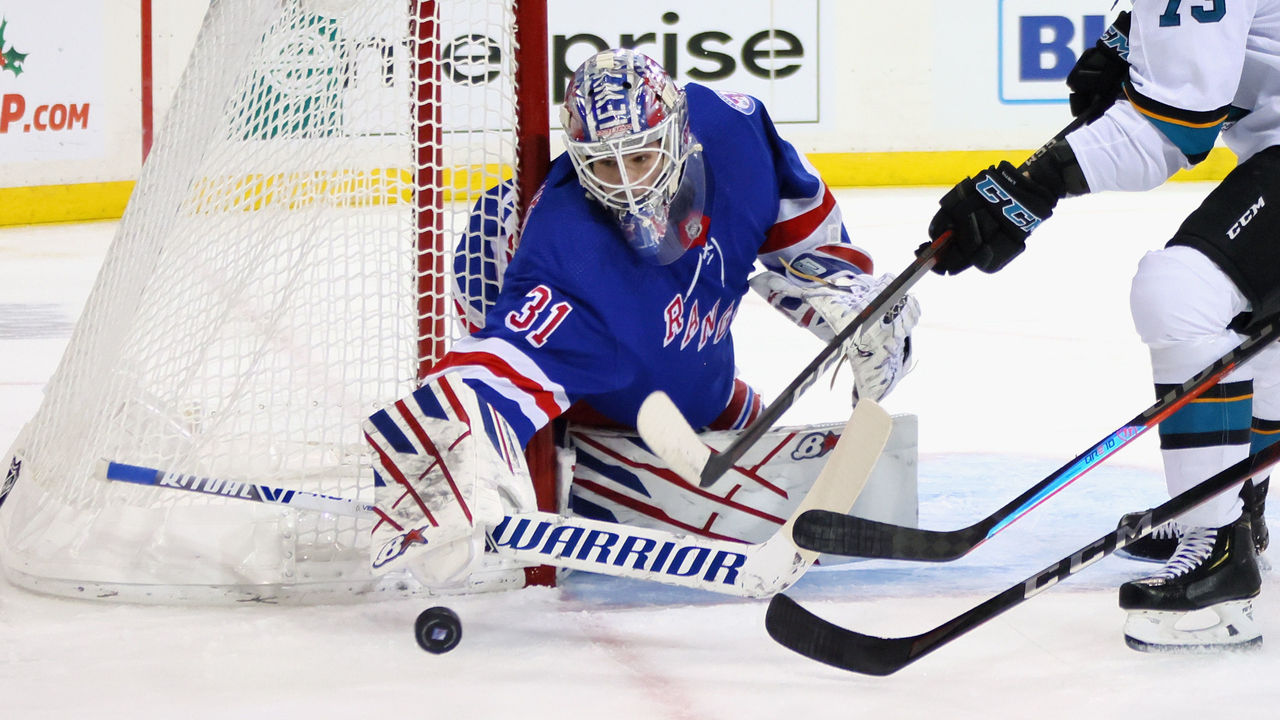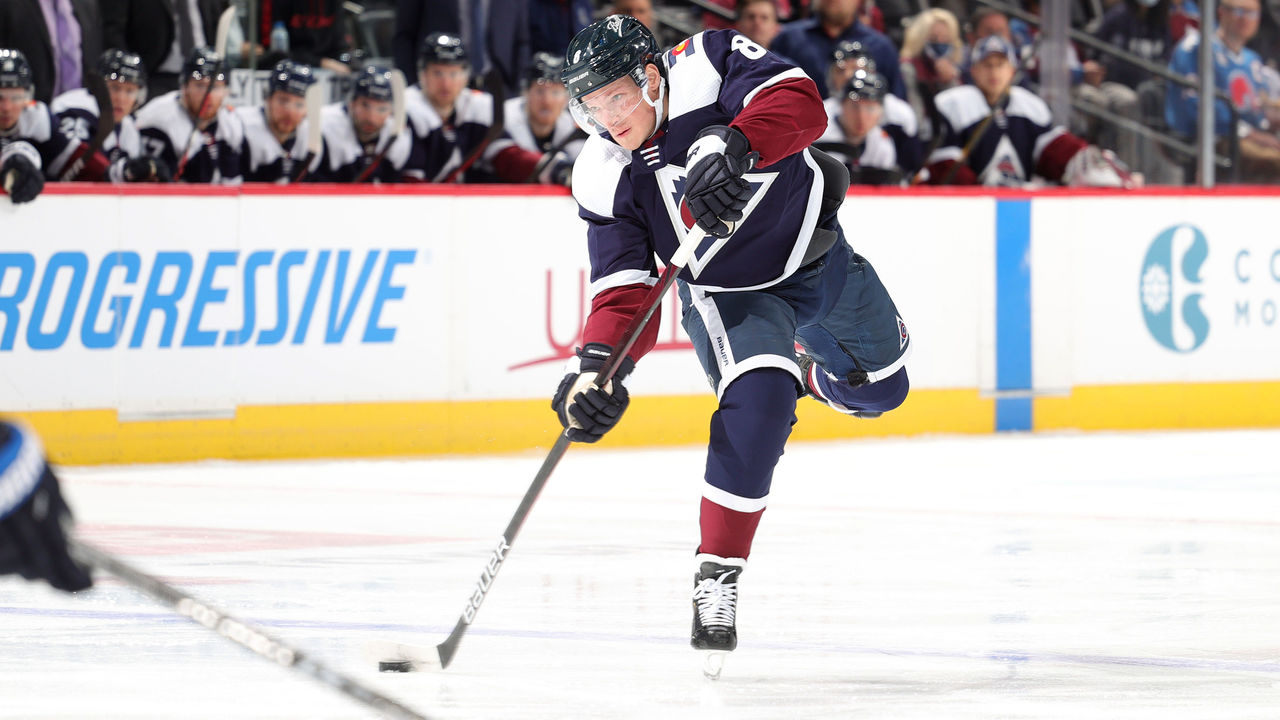Shortly after Auston Matthews scored for the second time Saturday night, nonchalantly bumping his 2021-22 goal tally to 58 through 67 games, veteran teammate Jason Spezza rotated his head on the Toronto Maple Leafs' bench.
Spezza, a former NHL star and noted hockey savant, then flashed Sheldon Keefe a dumbfounded look. At that moment, the Maple Leafs head coach later recalled, Spezza's eyes conveyed the equivalent of, "Wow, this is something special."
"I was surprised (Matthews) stopped at two, to be honest," Keefe, himself amazed, told reporters following Toronto's 3-2 win over Montreal. "With the way that he was playing, it felt like he was going to have a serious night."

Matthews' production has been so prolific of late that his performances are graded on a curve. A "serious night" for all but a handful of NHLers is a goal, maybe two. Matthews, who on Saturday became only the 13th player in history to score 50 over a 50-game stretch, has four hat tricks since Dec. 1.
On the year, Matthews is averaging 0.87 goals per game, which ties him with legends Phil Esposito (1971-72 and 1973-74) and Jari Kurri (1985-86) for the 20th-highest rate all time, minimum 50 games. The 24-year-old center is on pace for 67 tallies in 77 contests, which would be the greatest goal-scoring campaign since Mario Lemieux's preposterous 69 in 70 games in 1995-96.
With Matthews scorching hot and the Leafs' regular-season schedule winding down, there's no better time than now to dive into what makes the MVP favorite such an unstoppable force. To do so, we rewatched all 58 of his goals and assessed his statistical profile to find compelling trends and patterns.
Here's what stood out:
1. Attack mentality
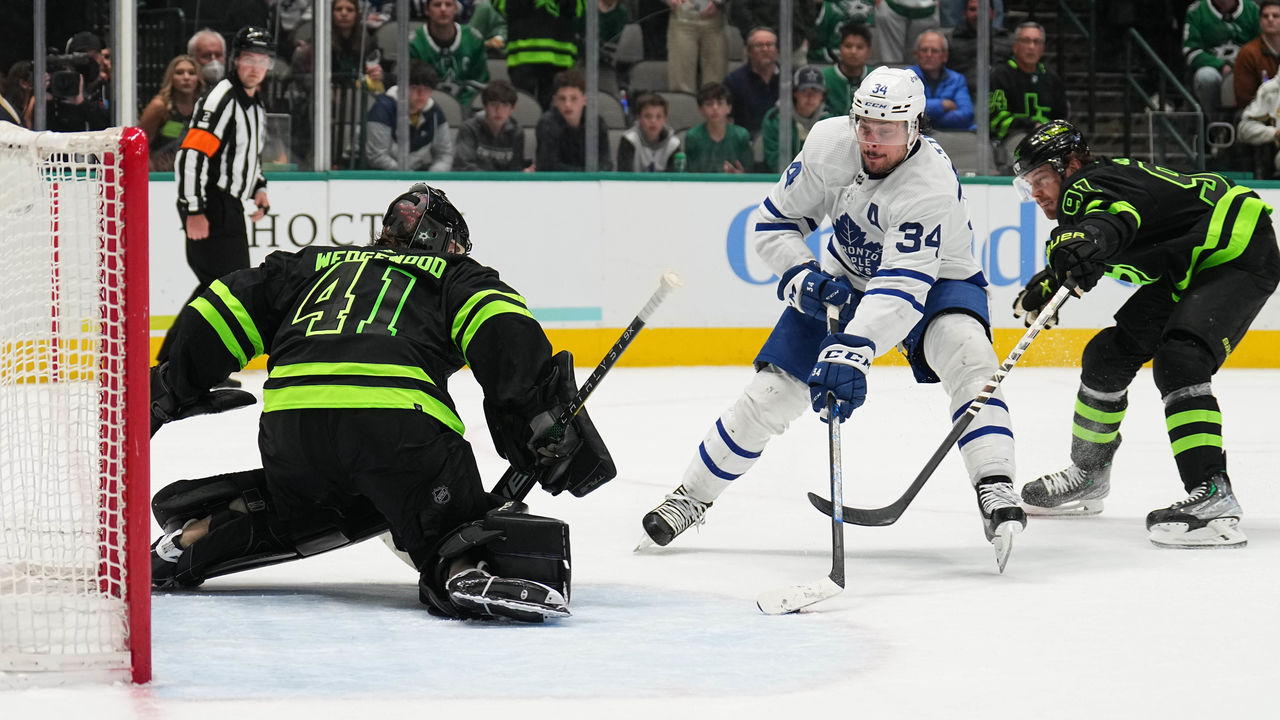
Matthews' default setting is attack mode.
The 2016 first overall draft pick first showed this mode during his four-goal NHL debut six years ago, and he's certainly called upon it many times. But in 2021-22, Matthews seems extra hungry.
He'll march through the neutral zone with purposeful strides, blitzing the open ice with the puck glued to his stick and his jersey flapping in the air. He'll beat an opponent to a loose puck in the offensive zone thanks to his excellent skating ability and tireless motor. He'll welcome physical play and sometimes initiates contact if there's a decent chance he can gain possession.
The puck, in his mind, is Auston Matthews' puck - nobody else's.
This attack mode was definitely initiated on his 24th goal of the season:
Notice how Matthews doesn't settle for a scoring chance from the top of the circle or go wide on the defender. Instead, he skates into the opponent's orbit, manufacturing a screen on the goalie before firing a bullet into the top corner.
Not many NHLers have the audacity to do that. Matthews does it regularly.
Defensive players simply can't afford to play him loosely. And no matter the situation - whether he's on his forehand or backhand, square to the goalie or at a sharp angle - the chances of No. 34 going for it are very high.
Matthews ranks first in the NHL in shots on goal with 320 and trails only shot volume king Alex Ovechkin and David Pastrnak in attempts with 542.
What's most impressive about Matthews' attack mentality is how he deploys his energy and enthusiasm in a responsible manner. At 6-foot-3 and 205 pounds, he could be a wrecking ball on the ice. He prefers to pick his spots.
There's a grace and finesse to his playing style. He's in command of his body and the puck while skating downhill - a testament to his next-level agility, balance, and puck control - and he has soft hands and a cool head in traffic.
2. All-purpose sniper

Matthews' skill set is terrifying. From the size and strength, to the intelligence and skating, to the puck skills and finishing ability, he's truly the complete package.
Knowing which tool to pull out of his toolbox in any given scenario is a vitally important - and often overlooked - part of his genius as a goal-scorer.
Of Matthews' 320 shots on goal, 176 have been wrist shots - no surprise for the man armed with the NHL's quickest, most deceptive release. He's also recorded 43 slap shots, 41 snap shots, 31 backhands, 16 tips, nine wraparounds, and four deflections. He's scored on 27 wrist shots, eight snaps, eight backhands, seven tips, six slaps, and two wraparounds.
Matthews showcased his tipping talent on Goal No. 27:
The possibilities seem endless.
More than 400 games into his career, that patented catch-and-release shooting technique continues to baffle goaltenders. He can blast a puck just as well mid-crossover as standing still. He can one-time the puck top corner after a give-and-go, turn a change of possession into a goal in the blink of an eye, deke out the goalie in tight, score off one foot, and so on and so on.
This versatility vaults Matthews from 40-goal territory to the 60-goal sphere.
Matthews has outperformed MoneyPuck's expected goals model by 20 goals this season. That's a stunning gap, and the distribution of his offense reveals even more: Matthews' 38.1 expected goals are split fairly evenly, with 14.1 in the high-danger area, 13.5 medium danger, and 10.4 low danger.
As illustrated below, Matthews prioritizes the high-percentage areas of the offensive zone yet generates offense from basically everywhere. (Green dots represent shots on goal, the red are missed attempts, and the yellow are goals.)
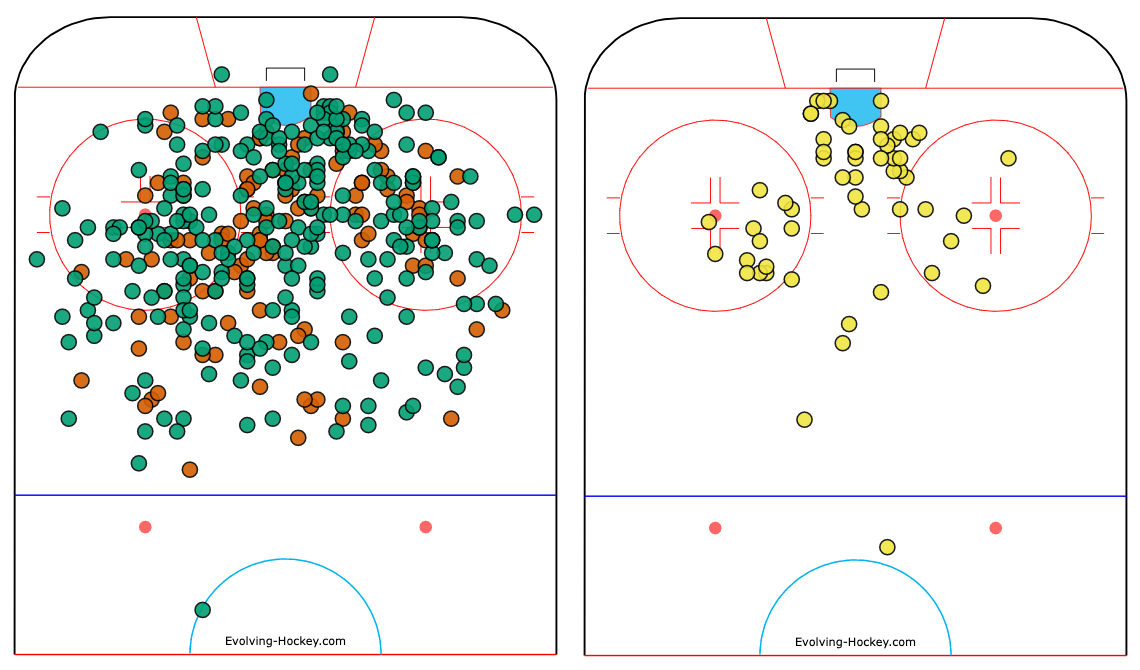
Watching his goals, it was mildly surprising to see Matthews bury so many pucks in and around the crease. Given how deadly he is from range, it's easy to forget he also consistently puts himself in position to tap in the 2-foot putt.
In other words, the understated moments, when he's lurking in the shadows, balance out the wow moments, when the degree of difficulty is off the charts.
3. The Marner effect
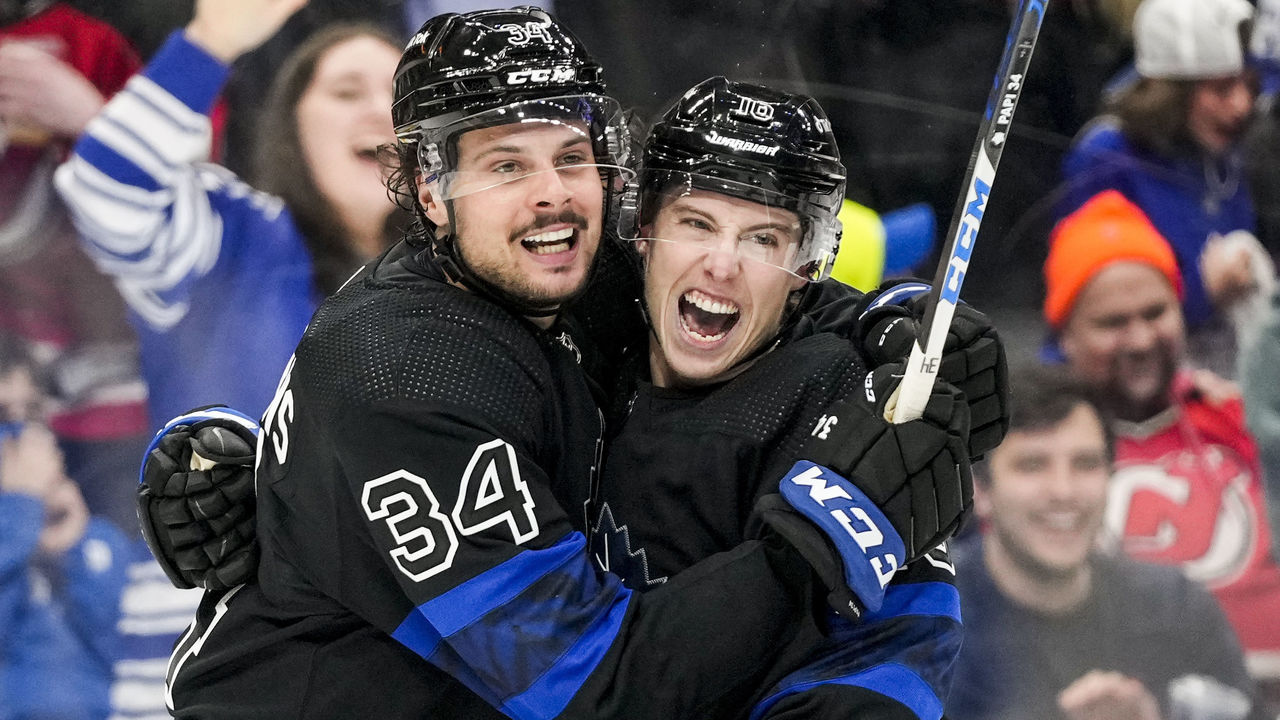
Matthews' goals are rarely fluky, as he beats goalies cleanly almost every time.
The vast majority can be attributed to his brilliance as a sniper. The rest can mostly be linked back to the ace playmaking of Mitch Marner.
Marner, who's been on the ice for 896 of Matthews' 1,374 minutes this season, leads all Leafs with 24 assists on Matthews' goals. (Michael Bunting, the third member of Toronto's elite top line, has 17 assists in 844 minutes together, while defenseman Morgan Rielly is third with 13 assists in 714.)
Half of Marner's 24 helpers are primary assists, including this nifty centering pass against the Colorado Avalanche for Matthews' 11th goal:
The Avs' defensive-zone coverage leaves plenty to be desired in that clip. However, without Marner's deft work below the dots, Matthews doesn't get a prime scoring chance. It takes a cerebral and crafty player like Marner to quickly identify the opportunity and then deliver the puck.
When Marner weaves through the offensive zone with the puck, defenses tend to shift some of their focus off Matthews. This allows him to creep into open pockets of ice. And, since Marner is one of the best in the world at threading the needle, Matthews often ends up with the puck on his stick, unguarded, and geared up to whip home a pretty goal.
Given his size and resume, it seems laughable that opponents would ever "lose" Matthews. Yet they do all the time. His chemistry with the wizardly Marner - along with the rookie Bunting and Rielly - is a primary reason why.
4. Pocket-picker
The NHL, unfortunately, doesn't officially track the wingspans of its players. If it did, Matthews would surely rank highly among the top goal scorers.
His reach is a huge asset in keeping opponents at bay on the offensive side of the puck, and it's equally crucial to his contributions as a Selke Trophy-caliber defensive player. Every once in a while those two worlds collide as Matthews picks the pocket of an opponent and then scores. Exhibit A:
That puck-stripping element of his game has become another signature over the past three years. A ferocious backchecker and sneaky stick-lifter, he's already accumulated a career-high 82 takeaways this season. He's the only forward in the league's top five.
Of course, not every steal leads to a goal. But a takeaway gives the Leafs possession of the puck, and Toronto's underlying numbers are superb when Matthews is on the ice. Mix in 53 blocked shots and a 56.3% faceoff success rate and Matthews is in the conversation for best two-way forward.
Matthews' steady defensive improvements underline one final trend from the tape review and statistical deep dive: He earns most of his goals. Only 15 of 58 have come on the power play, with the remaining 43 at even strength against shutdown lines. He has nine game-winners, five more than his empty-net tally.
Matthews is in a class of his own right now as a goal-scorer. And, with 10 games remaining, he's not done yet.
John Matisz is theScore's senior NHL writer. Follow John on Twitter (@MatiszJohn) or contact him via email (john.matisz@thescore.com).
Copyright © 2022 Score Media Ventures Inc. All rights reserved. Certain content reproduced under license.
